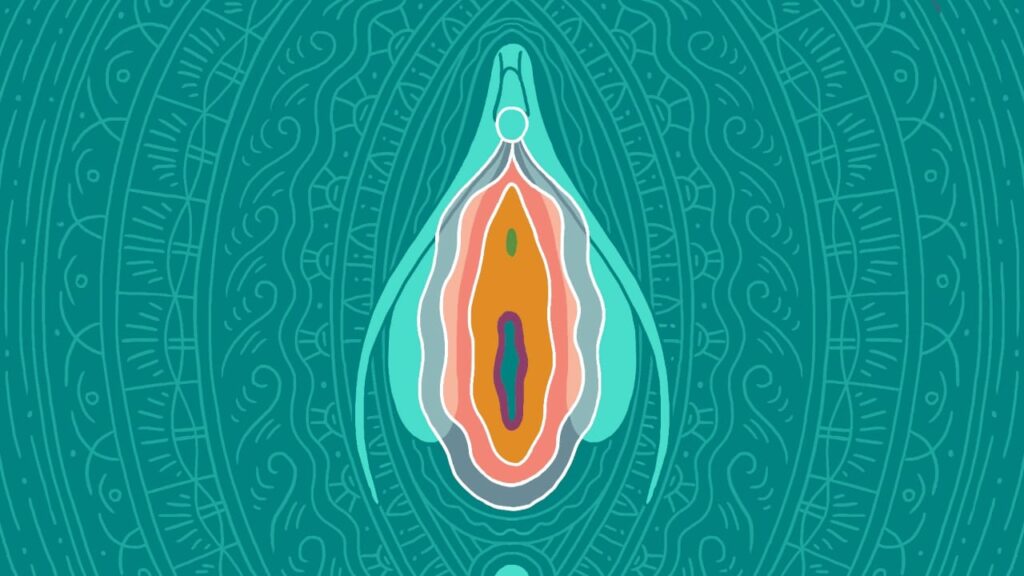The science and myth of the “Virginity” & “Hymen”

It is seen that countries full of culture, religion, traditions, beliefs and faiths have been paying great attention to virginity since ancient times. And the absence of sexual intercourse before marriage is defined as “virginity” in these societies. A woman is strongly expected by her society to remain a virgin in marriage, and her husband and relatives are also expected to confirm this observing bleeding in the first night of marriage. Virginity is tested by observing the rupture of the hymen in the female vagina. Along with this, the “hymen” has been the source of intense scrutiny and much anguish for centuries. Let’s get right about the myths and science surrounding it.
The hymen is made up of stretchy tissue near the opening of a woman’s vagina. It is of different shapes, sizes and thicknesses. Also, due to the elasticity of the tissue, the hymen expands and returns to its original state during sexual intercourse or when using a tampon for menstrual blood. Although all women must have a hymen, there may be women in society who do not. Just because there are people who are born without certain parts of the body, we cannot conclude that there are no women who are born without a hymen.
Although the biological significance of the human hymen is not clearly defined, in some species the hymen has specific functions. For example, guinea pigs’ hymens dissolve when they enter the mating season, and it grows back at the end of the season. But our hymens are incapable of performing such actions. And it does not grow back after being damaged. However, this prevents faeces, germs and dust from entering the vagina at very young ages. Damaged hymen is also used in forensics as an indicator of sexual abuse. But because the shape, thickness and elasticity vary, it is not correct to use the hymen as an indicator to determine whether a woman is sexually active or not.
The hymen testing is medically known as the “two-finger test,” but identified as a less useful clinical tool, and research has shown that it can be physically, psychologically, and socially harmful to the woman being tested. From a human rights perspective, virginity testing is a form of gender discrimination as well as a violation of fundamental rights, and can constitute sexual assault when performed without consent. Because of these reasons, the World Health Organization banned the examination of the hymen.
Before a woman reaches puberty, her hymen is very thin and sensitive. During puberty, as the body’s estrogen hormone levels increase, the thickness and elasticity of the hymen increases. Also, during pregnancy, the elasticity is more increased to facilitate childbirth. After menopause the body’s estrogen hormone levels drop again, causing the hymen to become thin again. The hymen that undergoes changes in this way can be damaged even without sexual intercourse. Examples include gynecological examinations, insertion of something into the vagina for masturbation, gymnastics, direct trauma to the pelvis, horse riding, and dancing that exposes the body to more stretch. Also, due to such actions, the hymen may be torn or more pulled. Also, a more elastic hymen may not tear even after intercourse. Therefore, it is not true that every woman will necessarily bleed during her first sexual intercourse. If the hymen is pulled suddenly, or if the woman is not sufficiently relaxed and calm during a sexual intercourse, there is a chance of bleeding. The most likely cause for vaginal bleeding is forced intercourse or tears in the vaginal wall due to lack of vaginal lubrication. Just as there may or may not be bleeding during intercourse any time, there may or may not be bleeding during the first intercourse.
A common misconception is that the hymen “seals” the vagina. But it is not so. There is a small hole in the center of the hymen to facilitate the discharge of menstrual blood. Also, most hymens are annular or crescent-shaped, and vary in thickness. Only a small percentage of women know that this may change with age and that some women are not born with this.
However, there are cases where the vagina is completely covered by the hymen, known as imperforated hymen. This condition occurs in one in 2000 women. (0.05%) In this case, the possibility of menstrual blood discharge is blocked, causing extreme pain. Therefore, this should be corrected through a surgery where a small incision is made to open the opening of the hymen or through a hymen removal surgery.
In this way, hymen piercing surgeries as well as hymen removal surgeries are currently being performed, Hymen reconstruction surgery is known as Hymenorrhaphy, Hymen reconstruction, Hymenoplasty and Hymen repair surgery. The hymen is repaired here by repairing the torn tissue parts with sutures or by tissue grafting. If there is no biological benefit to the hymen, what is the use of surgery to reconstruct it? Indeed, the need for it has arisen due to the psychological and social pressure on women for virginity. It is also seen that some people undergo this surgery to make the hole in the hymen smaller. However, this operation is prohibited for unmarried women in Arabia. The most detailed research regarding the referral of women to this surgery was conducted between January 2007 and December 2009 among 92 women in two hospitals in Amsterdam, Netherland. The conclusion is that 1/3 of those ninety women have undergone hymenoplasty surgery to repair the hymen damaged by sexual abuse. 7% of women attempted suicide due to loss of virginity. 31% of the women had undergone the surgery in anticipation of bleeding on the wedding day, and 12% of the women had performed the surgery with the aim of causing stiffness during sexual intercourse for meeting the needs of their partner. Also, 9% of women have had this surgery to get rid of psychologically painful sexual experiences, and 13% of women have had this surgery to increase their self-confidence.
However, It will take about 4 weeks to fully recover after hymen reconstruction surgery, which is done for various reasons. Also, keeping the genital area clean is essential during this time. But wash the genitalia with water only. Also, attention should be paid to refraining from alcohol and smoking, refraining from lifting weights, refraining from sexual activities, refraining from using tampons, menstrual cups and advised to use sanitary napkins during menstruation, and refraining from bathing in bathtubs and swimming pools until complete recovery. Otherwise, there is a possibility of inflammatory conditions, swelling, allergies or infections in the genital area. Itching may also occur due to the stitches applied. Vomiting, blood clots, hematoma, spot bleeding and numbness in the genital area may occur.
Also, if a female child under the age of 18 years is referred for this surgery, she must come with a guardian, and any woman must express her consent in writing for the surgery. But if someone has genital cancer and sexually transmitted diseases is not suitable for this surgery.
It is possible to reduce the social pressure on virginity by drawing the attention of the society to the studies conducted to debunk this myth of hymen, which causes women to be referred for unnecessary surgeries, and by changing the legal practices that approve physical tests related to virginity.
The problem is not only that many of these ideas have been ingrained in the public mind for generations, but they are also supported by irrelevant or unscientific ideas. This cultural idea of virginity is a reason for the inequality of sexual freedom between men and women.
Some countries have taken steps to change the name of the hymen as a way to put an end to this myth. Since this tissue is known by a word meaning “hymen” in Sinhala as well as Arabic and Czech, changing its name seems a very appropriate idea. Using an alternative name like ‘vaginal corona’ will go a long way in changing the misconceptions associated with this. Researches have confirmed that changing the name of the hymen can actually be successful in changing such attitudes.
In 2009, the Swedish Federation of Sexuality Studies changed the Swedish word ‘modomsina’, means “hymen”, to ‘slidkrans’, means “vaginal corona”. And many sex educators in Europe also believe that the name of this membrane should be changed to the word “vaginal corona”. The English word for hymen comes from the ancient Greek god ‘hymen’ (god of marriage). But it should be known that many other factors are responsible for the success of marriage, not the hymen.
Although unbridled scrutiny of virginity creates sexual inequality and psychological distress, apart from its cultural, social and religious values, maintaining virginity is important for reducing sexually transmitted diseases and teenage pregnancy. For this purpose, programs to educate the youth community under the names “virginity pledge”, “Silver Ring”, “Sexual abstinence education” are being implemented in different countries. In order to protect virginity, special attention is paid to the transmission of diseases caused by engaging in anal intercourse, oral intercourse or various other sexual behaviors without engaging in vaginal intercourse, methods to prevent pregnancy and ways to detect pregnancy at an early stage. Looking at the current events, it is felt that such sex education is essential for the Sri Lankan society.
Because there are other ways to engage in sexual activities without damaging the hymen, and because there are cases where the hymen is not present at birth, and because the most elastic hymens can remain undamaged even with vaginal intercourse, it is seen how fatuous it is to check virginity through bleeding. And because of this unscientific virginity test, suicides, divorces and murders are happening all over the world every day. This gender-based violence has transcended human rights violations and become a widespread public health problems. The World Health Organization estimates that a total of 35% of women worldwide experience physical or sexual violence from their husbands or partners due to their virginity. Such gender-based violence undermines women’s health and creates various other legal, ethical and social problems for all people involved.
Research reports prove that abused women are significantly more likely to experience serious health problems compared to women who have not experienced such abuse. Women who experience such abuse are 16% more likely to have a low birth weight baby. And the risk of depression, alcohol addiction and miscarriage among abused women is doubled, and in some regions of the world it is 1: 5 times higher. And women who have experienced partner violence are also more likely to be infected with HIV.
Providing the society with the right knowledge about virginity and sexuality which causes such health and social problems, drafting the right drafts of laws and implementing them correctly, it will be possible to dispel the myths in the society and create a healthy and productive society that does not disturb lives due to sexuality.


